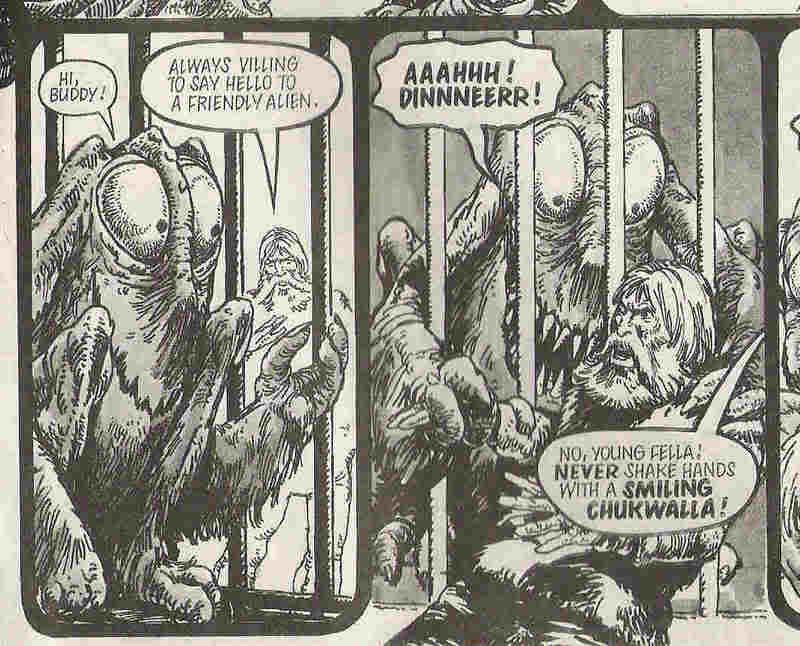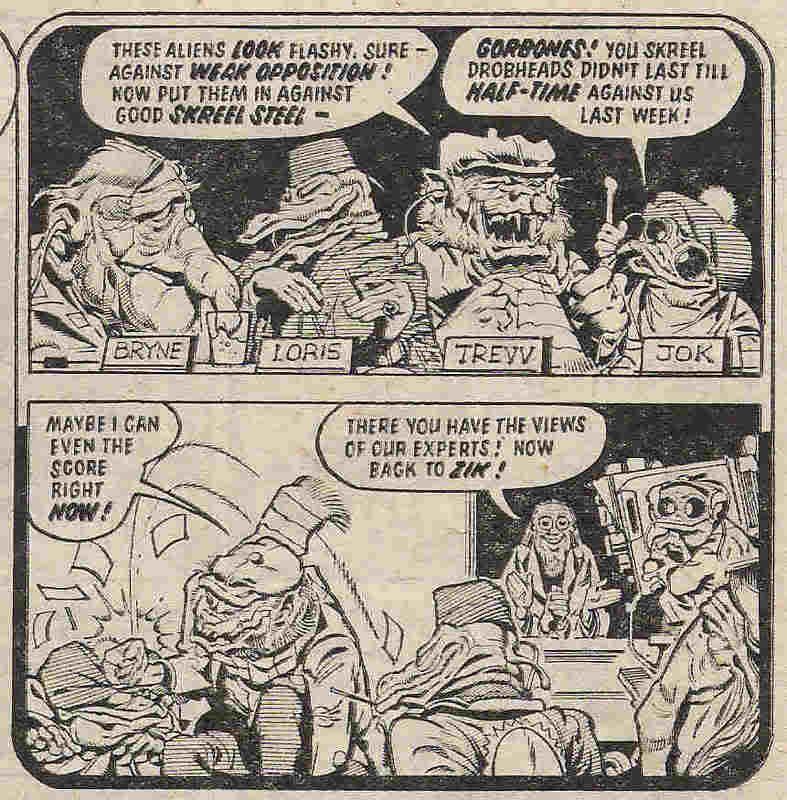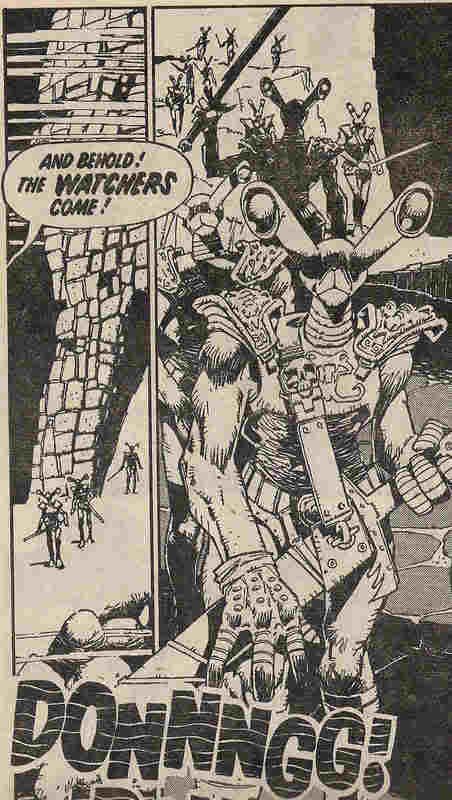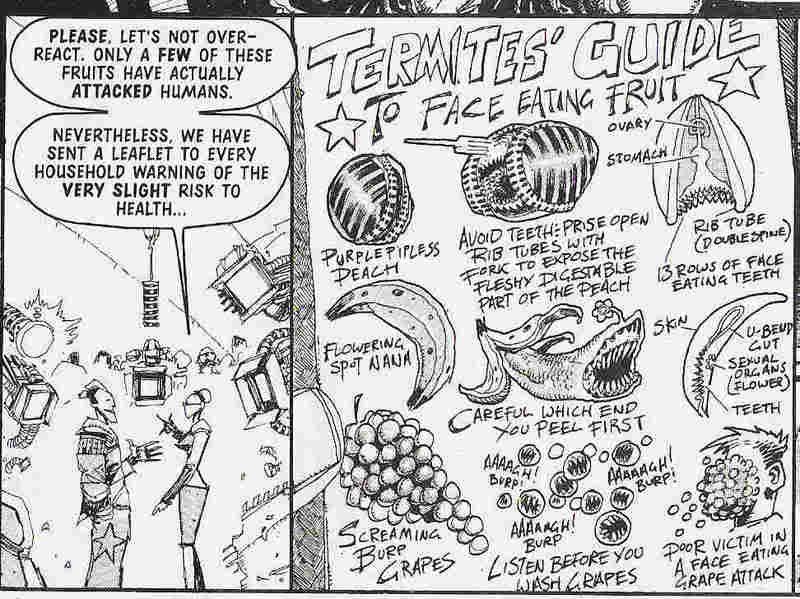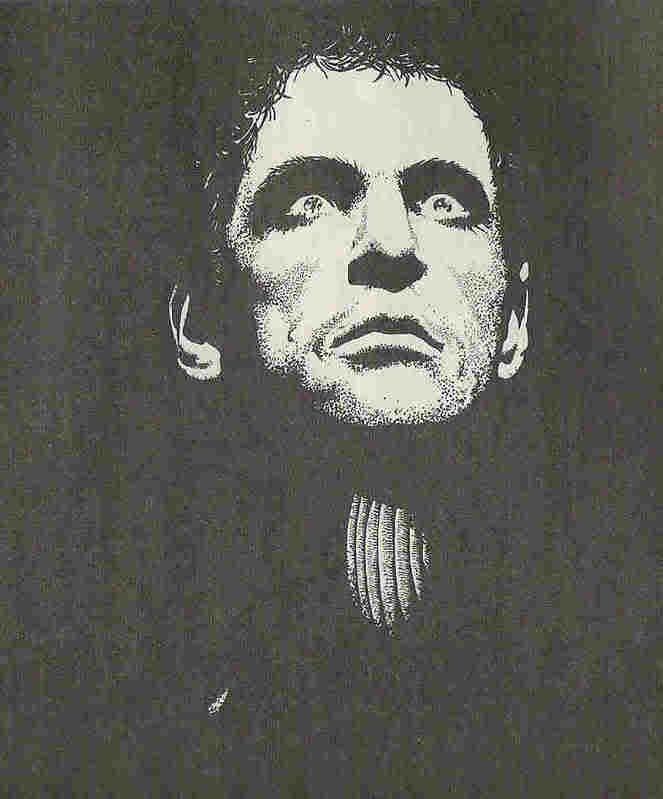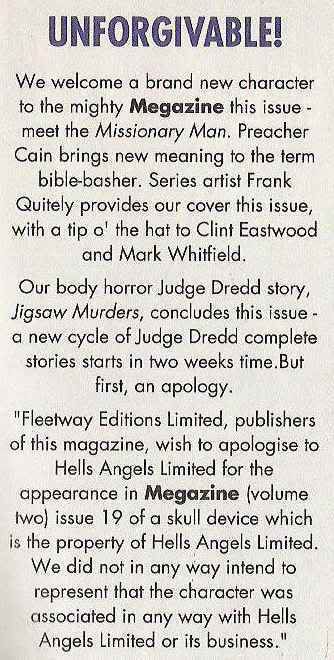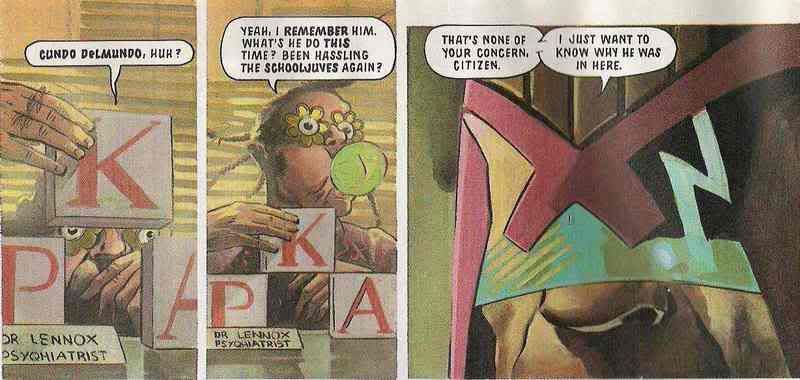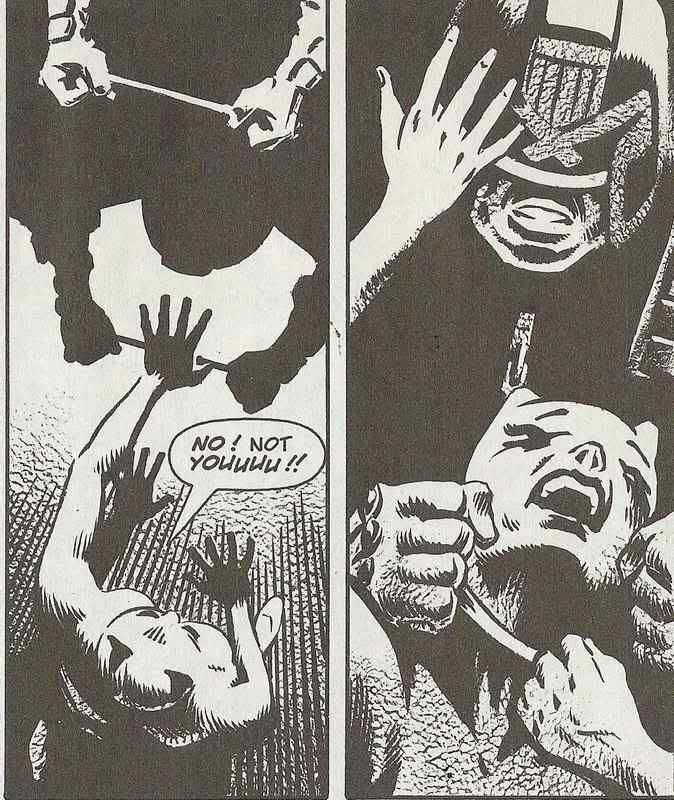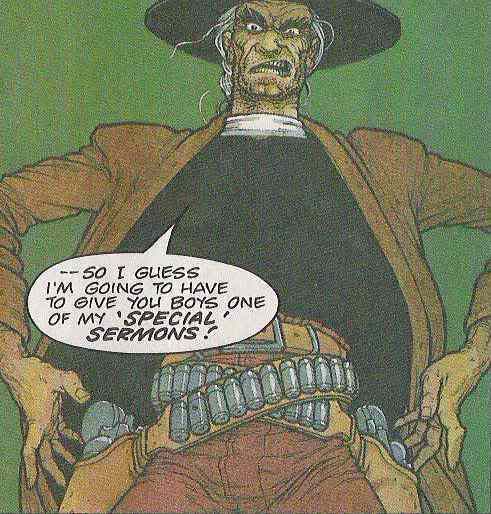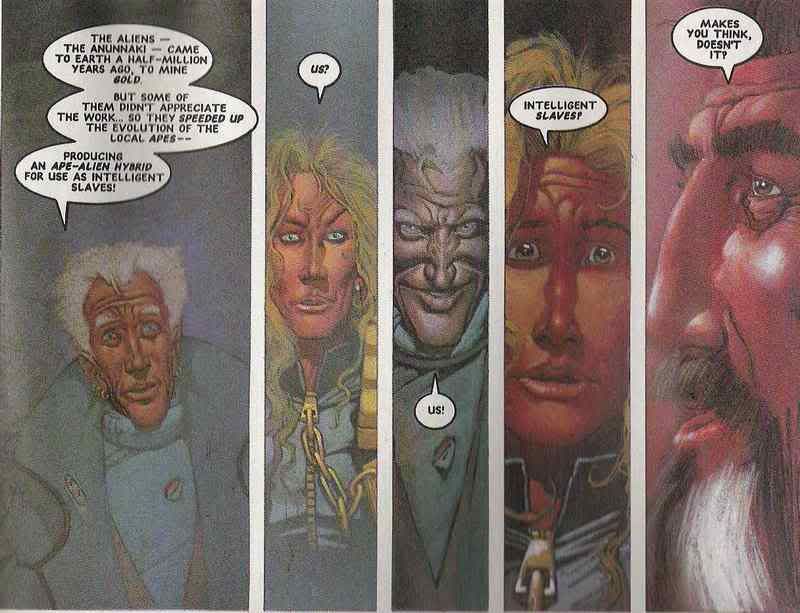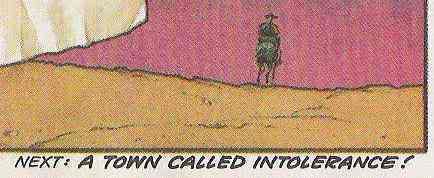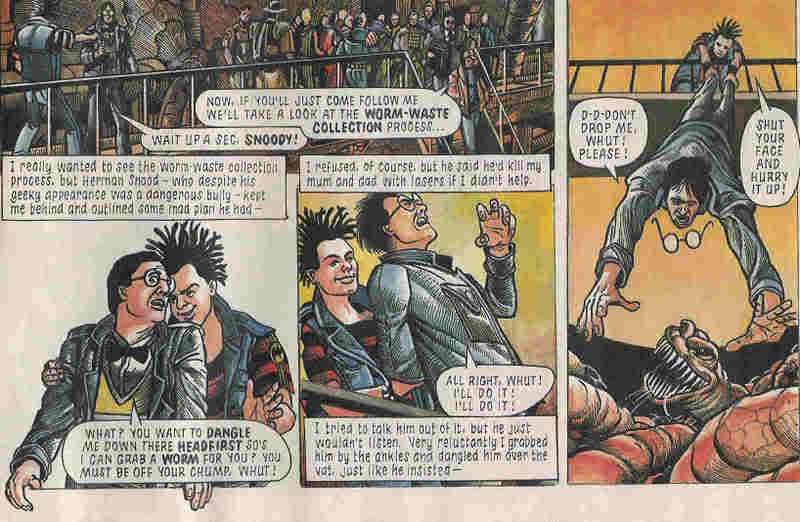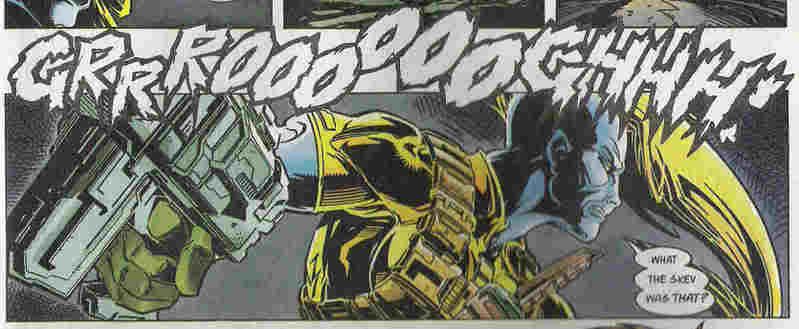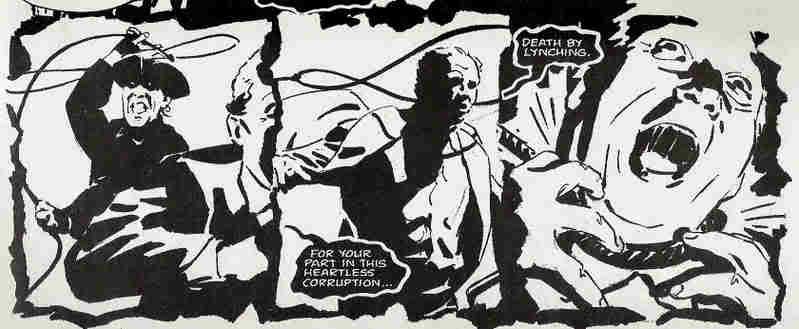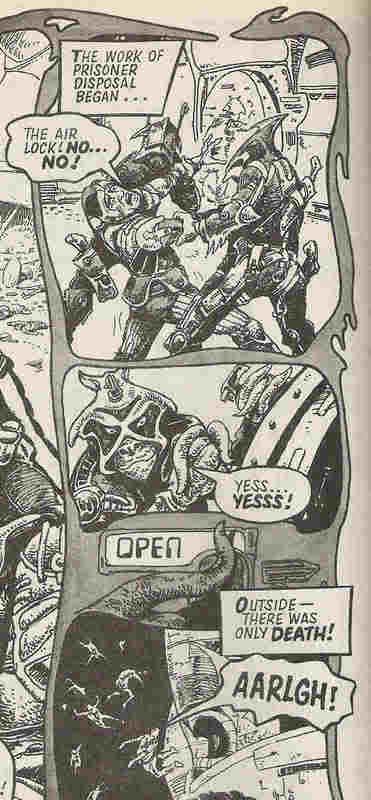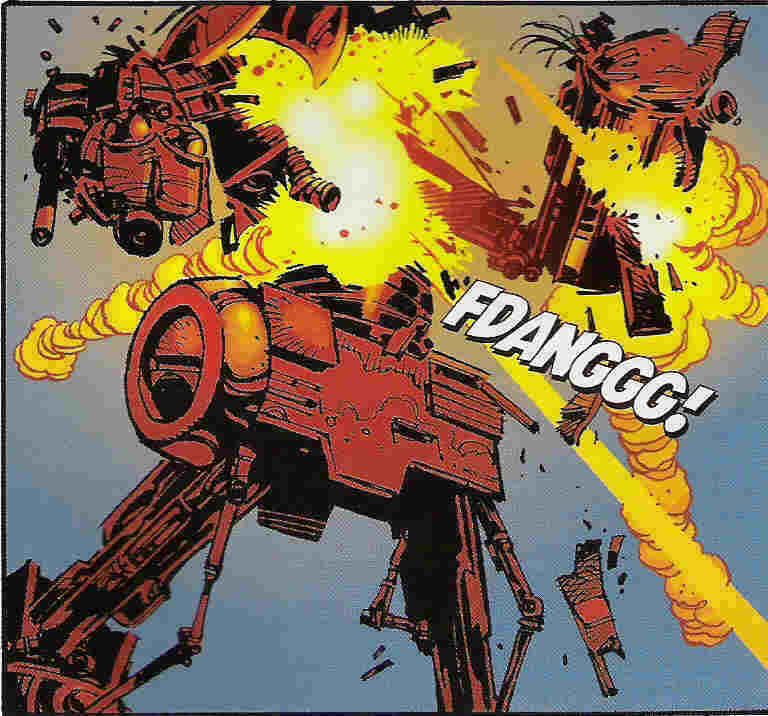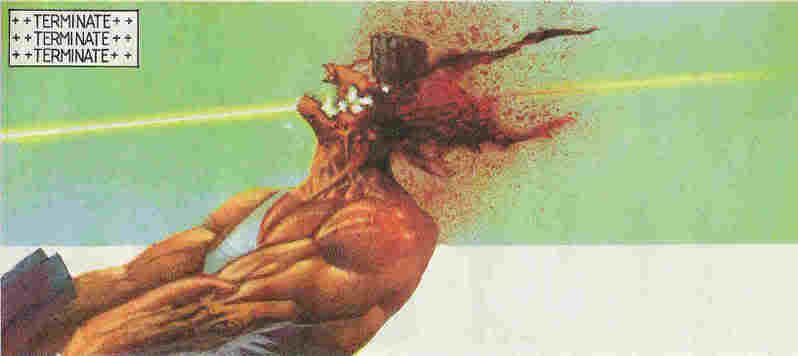Homosexual heroes
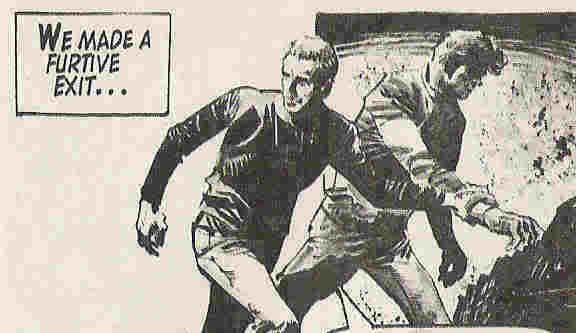
In the future, hopefully people won't be so hung up about sexuality. I wouldn't go so far as to say that 2000 AD has actively explored this particular aspect of future living, but in my head at least the comic has been pretty good about a) not really showing sex that much except when relevant b) not being afraid to have characters who happen to be gay but this is not the main point of the story. Which one suspects is in no small part thanks to the efforts of writers John Smith, Peter Milligan and Grant Morrison. I have no knowledge of these individuals sexuality (I think the last two are married to women?), but they're all great at using gay/bi/lesbian/'actually I don't care for labels but I like having sex' characters in a pleasingly offhand way. I guess John Smith wins the prize for his creations such as Devlin Waugh and most of the Optimen out of New Statesmen.
[Oh, so you want a list of out 2000 AD heroes? Tricky. Devlin Waugh; Fervent & Lobe; Hannah Chapter; Dante's mum's first mate; Bix Barton(?); all John Smith villains; I know this list should be longer given what I've said...]
Characters from the Wagner/Grant/Mills camp tend to avoid overt discussions of sexuality, but again there's a welcome offhandness about the whole thing. Obviously many jokes have been made about Johnny Alpha and Wulf - despite the obvious insertion of Durham Red as a sort-of love interest for Johnny after Wulf's death. One hopes that they all find happiness where they can get it. In Mills's worlds of khaos, one assumes that picking and sticking to a rigid sexuality is just plain wrong. Even straight-laced Hammer-Stein is pretty gay in Ro-Busters.
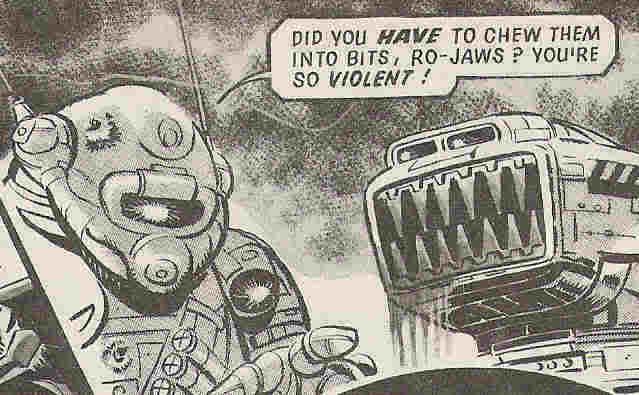
I guess I'm rambling here, but the point is that I welcome 2000 AD's efforts to feature non-hetero characters. I think it succeeds in this a little better than it does with its efforts to balance race and gender, although in those two it's streets ahead of your superheroes (says the white male...). Or maybe it's just that since sex features so scarcely in 2000 AD (except for Nikolai Dante and Valkyries and rare occasions elsewhere), it's easy to project a sexuality onto the characters. Of course, a lot of this reading into stuff will be to do with the artist. Again, I don't know or necessarily care if any given artist is trying to do this, but it's fun to speculate.
Case in point, the Harlem Heroes. No, not the all-black aeroball players who I suspect aren't far enough in the future to be out sportsmen, but rather their 90s counterparts who are much reviled by the squaxx community. Personally, I thought the first 6 or 7 episodes where they break out of prison were ace. But then it just got a bit silly. Some of the stories in the late 700s featuring individual heroes were ok. Anyway, by the time of 'Cyborg Death Trip' in 928-939 or thereabouts, it seems that Tharg was trying to ditch the (pre-written) series, and therefore deliberately made it ridiculous with cheap art and what I imagine must have been re-written comic dialogue. The upshot of which is, all of the characters are gay. All of them. This is properly awesome.
I have an idea that Patrice and possibly Trips were meant to be gay in the first place (the clue's in the name - and lest you think I'm pandering to stereotypes, let's not forget that series creator Michael Fleisher is not known for his subtletly. Blame him if you must). Clearly there was banter going on between surly Slaine-lite figure Slice and tough yet fashion-conscious Tyranny Rex-lite Silver. But in Cyborg Death trip, the two are separated for almost the entire storyline, and their bickering/simmering passion is re-centred on two new recruits to the heroes - a deadly eye-patched woman for Silver, and a slick shaded man for Slice. It's beautiful. And Deacon? Well, here I'm just seeing things, but given that he has absolutely no love interest whatsoever I'm required to make up my own version. And I know what makes the series more fun, so I'm going with that.
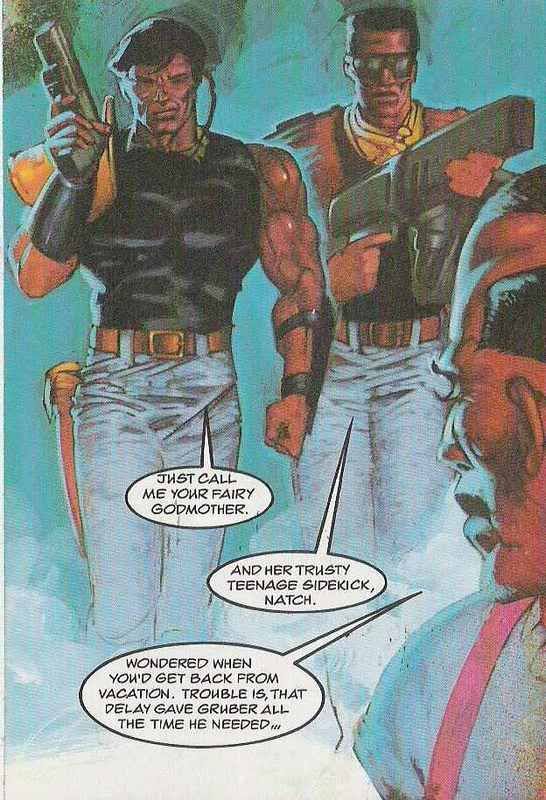
Lovely work from Siku, who I think understood the emotional subtext perfectly.
Dash it all, now I feel guilty for suggesting that Tharg deliberately made the Heroes gay to make the series funnier. It DOES make it funnier, but it shouldn't just for that reason. Obviously not because being gay is funny, but because it subverts expectations, you see.

